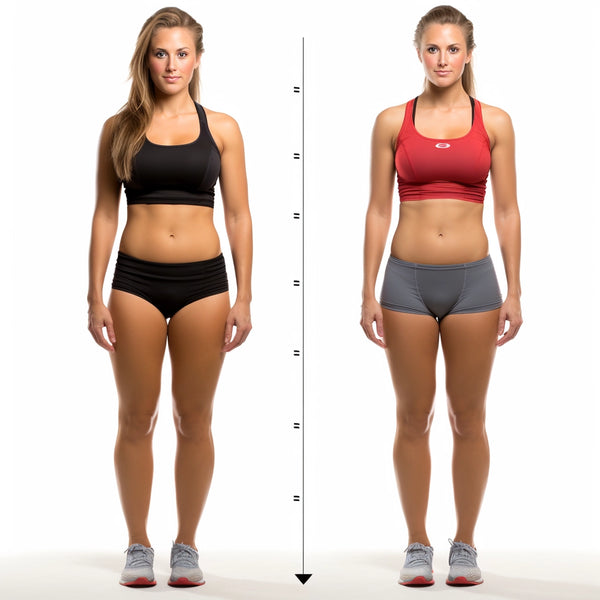Navigating the journey of body recomposition is a central concern for many health-conscious individuals. The goal is not merely to see a lower number on the scale, but to sculpt a physique that is leaner, stronger, and healthier. Understanding the intricate dance between fat loss and muscle maintenance is critical for success. Let’s explore the strategic approaches to prioritize fat loss while safeguarding and even augmenting muscle mass.

More Than Just Weight Loss
Body recomposition goes beyond traditional weight loss by emphasizing the importance of where the weight loss comes from – specifically, from fat stores. Striking the right balance between reducing fat mass and preserving lean muscle tissue is the linchpin of a successful body transformation.
Why Prioritize Fat Over Weight Loss?
Prioritizing fat loss over general weight loss is pivotal. Fat loss is tied to improved metabolic health, better hormonal balance, and an enhanced aesthetic. Additionally, maintaining muscle mass is vital for metabolic function, structural health, and overall vitality.
How to Track Fat Loss Accurately
Traditional scales fall short when it comes to providing insights into body composition changes. To accurately measure fat loss, one may consider the following methods:
- Utilize a body fat scale: Modern scales can estimate your body fat percentage, giving a clearer picture of body composition changes.
- Employ skinfold calipers: With practice, skinfold measurements can offer a cost-effective way to estimate body fat percentage.
- Monitor size reductions: Regularly measuring the waist, hips, and other body parts can indicate fat loss, especially if combined with consistent strength training.

Key Strategies for Optimizing Fat Loss and Muscle Maintenance
Elevate Protein Intake
Protein is the cornerstone of muscle maintenance. High-quality protein supports muscle synthesis and can help preserve muscle mass even in a caloric deficit.
- Aim for a range of 0.7 to 1 gram of protein per pound of body weight to promote satiety, enhance muscle preservation, and fuel fat loss.
- Incorporate lean protein sources like chicken, fish, legumes, and low-fat dairy into every meal.
Incorporate Strength and Resistance Training
Exercise, particularly strength training, is non-negotiable in the quest for fat loss with muscle maintenance.
- Engage in full-body resistance workouts at least 3 times per week to stimulate muscle growth and enhance metabolic rate.
- Combine with regular cardiovascular exercise to promote heart health and increase overall caloric burn.

Embrace a Moderately Hypocaloric Diet
Creating a caloric deficit is essential for fat loss, but the deficit should be moderate to avoid muscle catabolism.
- A daily deficit of 500 calories can be effective for gradual, sustainable fat loss.
- Focus on nutrient-dense foods like vegetables, fruits, whole grains, and healthy fats for optimal health and satiety.
Manage Recovery and Stress
Adequate sleep and stress management are often overlooked aspects of fat loss and muscle retention.
- Ensure 7-9 hours of quality sleep per night to aid in recovery and hormonal balance.
- Implement stress-reduction techniques like meditation, yoga, or deep-breathing exercises to minimize the impact of cortisol, a hormone that can promote fat storage.
Stay Hydrated
Hydration is a key but frequently underestimated element of body recomposition.
- Drink at least 8 cups of water per day, or more if you are active or live in a hot climate.
- Hydration supports metabolic processes and helps maintain muscle function during workouts.

The Bottom Line
Fat loss, as opposed to weight loss, should be the primary focus for those aiming to improve their health and physique. By implementing the strategies outlined here – such as consuming adequate protein, engaging in strength training, maintaining a moderate calorie deficit, and prioritizing recovery – you can shift the scale in favor of fat loss while maintaining and building muscle. This holistic approach will ensure that the weight lost is primarily from fat, leading to a healthier, more muscular, and more functional body.
Embark on your journey to body recomposition with patience, dedication, and a focus on sustainable practices that prioritize fat loss while preserving the muscle that is essential for a robust and vigorous life.
FAQ's
Q1: What is the main goal of body recomposition?
The main goal of body recomposition is to reduce fat mass while preserving and potentially increasing lean muscle tissue, resulting in a physique that is leaner, stronger, and healthier.
Q2: Why should fat loss be prioritized over weight loss?
Fat loss should be prioritized over weight loss because it's associated with improved metabolic health, better hormonal balance, enhanced aesthetics, and it helps maintain essential muscle mass, which is crucial for metabolic function and overall vitality.
Q3: How can one accurately track fat loss?
To track fat loss accurately, you can use a body fat scale, skinfold calipers for body fat estimation, and monitor size reductions through regular measurements of the waist, hips, and other body parts, especially if combined with consistent strength training.
Q4: What dietary approach is recommended for optimizing fat loss and muscle maintenance?
To optimize fat loss and muscle maintenance, it is recommended to elevate protein intake (0.7 to 1 gram per pound of body weight), engage in strength and resistance training, embrace a moderately hypocaloric diet with a 500-calorie deficit per day, and focus on nutrient-dense foods.
Q5: Why is recovery and stress management important in body recomposition?
Recovery and stress management are vital because they help with hormonal balance and reduce the impact of cortisol, which can promote fat storage. Adequate sleep and stress-reduction techniques support recovery and are essential for successful fat loss and muscle retention.

